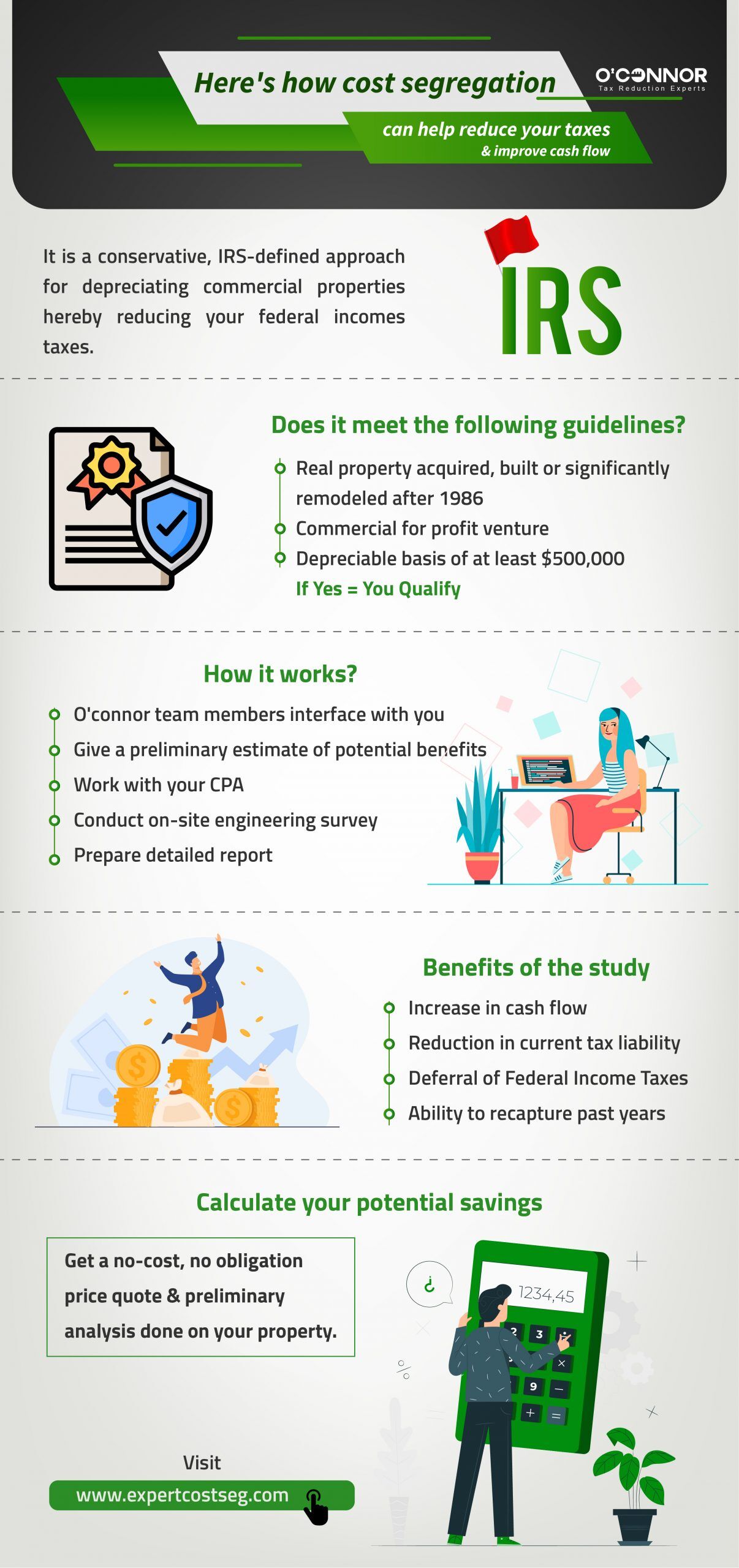Every real estate investor focuses on reducing his/her tax liability and tries to take advantage of the tax strategies available. But, not all are aware of cost segregation. Cost segregation is an IRS defined approach for reducing your taxable income. It identifies and depreciates the components of a real estate property at an accelerated rate. When a cost segregation study (CSS) is carried out properly, it can increase your cash flow and reduce the tax liability.
Understanding depreciation
You must have come across the word depreciation, it is nothing but deducting the loss from the value of the asset. This loss is usually because of wear and tear. But, when it comes to real estate properties, they are depreciated over a period of time and this differs based on the property type. Residential properties are usually depreciated over 27.5 years and commercial properties over a 39 year period. Many property owners use the straight-line depreciation method where the entire property is depreciated over a certain period of time. Not all are familiar with taking advantage of bonus depreciation via a cost segregation study.
What is cost segregation?
As explained above, cost segregation is a tax planning tool. A cost segregation study identifies and differentiates personal property assets from real property assets for taxation purposes. Personal property assets include items clipped to the building but are not a part of the operation and maintenance. When compared to the straight-line depreciation method, a cost segregation study lowers the tax rate because the assets can be written off at an accelerated rate over a 5, 7, or 15 year period.

Property tax and cost segregation
Let’s take carpeting and cabinetry as a simple example. They usually fall under the 5 or 7 year period. But then, when it comes to property tax, these costs are considered real property. It is important that the real estate owner does not classify them below the category of furniture and fixture as these costs are already classified below the value of the real estate. This might result in double taxation. Proper use of a cost segregation study helps prevent double assessment which in turn results in double taxation.
Benefits of a cost segregation study
- Increased tax savings; a cost segregation study accelerates depreciation and reduces tax rates during the early years of a property’s life
- When a CSS is properly documented, the IRS inquiries can be resolved at an earlier stage
- A CSS reduces tax liability and also has the ability to recapture past years
O’Connor has performed thousands of IRS cost segregation studies on commercial property assets nationwide and abroad. One of the major aspects of our study is the preliminary estimate of potential benefits. We at no charge and with no obligation, perform a preliminary analysis that will estimate approximate savings for your asset based on studies previously completed on similar assets.
Take advantage of our FREE property analysis. Call us at 1-877-375-4291 to learn more about our cost segregation services.
